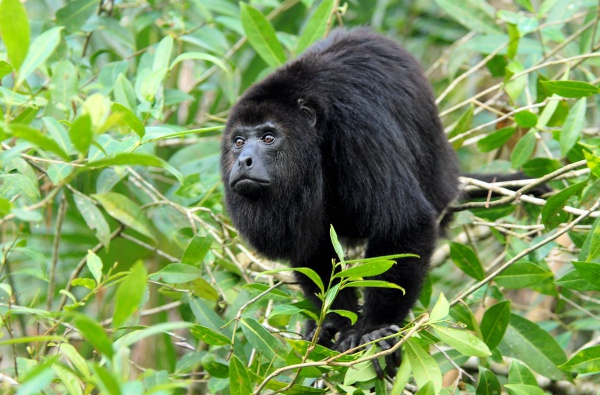Facts About Guatemalan Howler Monkey
The Guatemalan black howler, also known as the Yucatan black howler, is a captivating species of howler monkey native to Central America, particularly in regions such as Belize, Guatemala, and the Yucatan Peninsula in Mexico. These monkeys inhabit various forest types and are the largest species of howler monkey. Notably, the males are the largest monkeys in Central America. They are easily identified by their long, black fur, prehensile tails, and the distinctive white scrotums of the males. Their diet primarily consists of leaves and fruits, with the breadnut tree being a particular favorite.
These monkeys are highly social and typically live in groups that include one or two adult males and a higher number of females, with a ratio of about 1.3 females for each male. A typical group ranges from 2 to 10 individuals and they occupy territories of 3 to 25 hectares. Their daily activities involve substantial amounts of resting, feeding, moving around, and socializing. Female Guatemalan black howlers reach sexual maturity at around four years old, while males mature between six and eight years. These monkeys are diurnal, meaning they are active during the day, and they are primarily arboreal, spending most of their time in trees. Their distinctive howls can often be heard at dawn and dusk.
Regrettably, the Guatemalan black howler is classified as endangered. They face significant threats from habitat loss, hunting, and capture for the pet trade. The International Union for Conservation of Nature (IUCN) projects a considerable decline in their population over the next 30 years. These monkeys are part of the New World monkey family Atelidae and belong to the genus Alouatta, with no recognized subspecies.
In some regions, they coexist with the mantled howler. The current limited distribution of the Guatemalan black howler is believed to result from historical migrations from South America to Central America, with subsequently arriving species pushing them into their present range.

 Mexico
Mexico